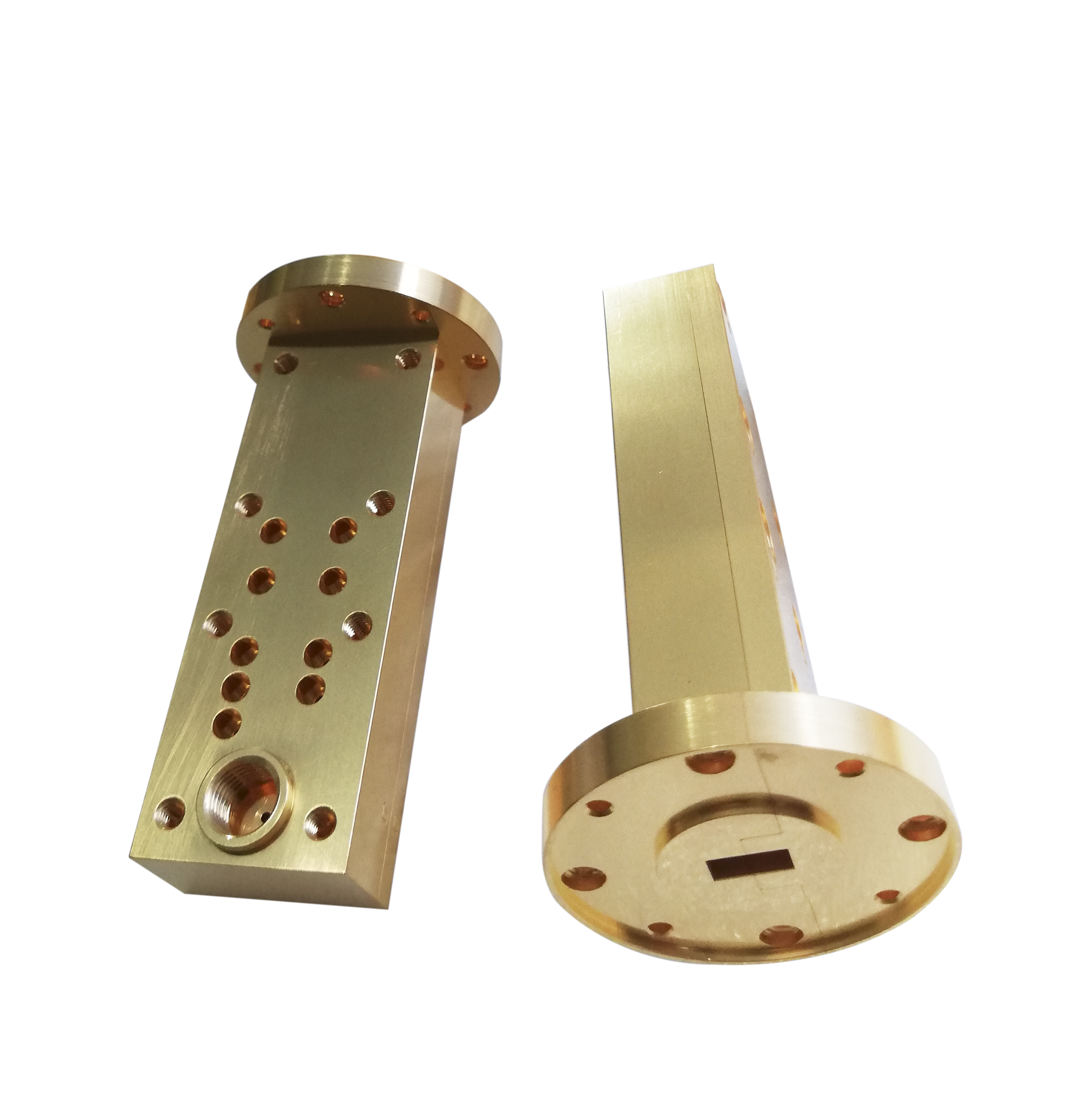Millimeter wave (mmWave) is the electromagnetic spectrum band with a wavelength between 10mm (30 GHz) and 1mm (300 GHz). It is referred to as the extremely high frequency (EHF) band by the International Telecommunication Union (ITU). Millimeter waves are located between microwave and infrared waves in the spectrum and can be used for various high-speed wireless communication applications, such as point-to-point backhaul links.
Macro trends accelerate data growth
With the increasing global demand for data and connectivity, the frequency bands currently used for wireless communication have become increasingly crowded, driving the demand for accessing higher frequency bandwidth within the millimeter wave spectrum. Many macro trends have accelerated the demand for larger data capacity and speed.
1. The amount and types of data generated and processed by big data are increasing exponentially every day. The world relies on high-speed transmission of large amounts of data on countless devices every second. In 2020, each person generated 1.7 MB of data per second. (Source: IBM). At the beginning of 2020, the global data volume was estimated to be 44ZB (World Economic Forum). By 2025, global data creation is expected to reach over 175 ZB. In other words, storing such a large amount of data requires 12.5 billion of today’s largest hard drives. (International Data Corporation)
According to United Nations estimates, 2007 was the first year in which the urban population exceeded the rural population. This trend is still ongoing, and it is expected that by 2050, more than two-thirds of the world’s population will reside in urban areas. This has brought increasing pressure on telecommunications and data infrastructure in these densely populated areas.
3. The multipolar global crisis and instability, from pandemics to political turmoil and conflicts, mean that countries are increasingly eager to develop their sovereign capabilities to mitigate the risks of global instability. Governments around the world hope to reduce their dependence on imports from other regions and support the development of domestic products, technologies, and infrastructure.
4. With the world’s efforts to reduce carbon emissions, technology is opening up new opportunities to minimize high carbon travel. Today, meetings and conferences are usually held online. Even medical procedures can be executed remotely without the need for surgeons to come to the operating room. Only ultra fast, reliable, and uninterrupted low latency data streams can achieve this precise operation.
These macro factors prompt people to collect, transmit, and process more and more data globally, and also require transmission at higher speeds and with minimal latency.

What role can millimeter waves play?
The millimeter wave spectrum provides a wide continuous spectrum, allowing for higher data transmission. Currently, the microwave frequencies used for most wireless communications are becoming crowded and dispersed, especially with several bandwidths dedicated to specific departments such as defense, aerospace, and emergency communication.
When you move the spectrum up, the available uninterrupted spectrum portion will be much larger and the retained portion will be less. Increasing the frequency range effectively increases the size of the “pipeline” that can be used to transmit data, thereby achieving larger data streams. Due to the much larger channel bandwidth of millimeter waves, less complex modulation schemes can be used to transmit data, which can lead to systems with much lower latency.
What are the challenges?
There are related challenges in improving the spectrum. The components and semiconductors required to transmit and receive signals on millimeter waves are more difficult to manufacture – and there are fewer available processes. Manufacturing millimeter wave components is also more difficult because they are much smaller, requiring higher assembly tolerances and careful design of interconnections and cavities to reduce losses and avoid oscillations.
Propagation is one of the main challenges faced by millimeter wave signals. At higher frequencies, signals are more likely to be blocked or reduced by physical objects such as walls, trees, and buildings. In the building area, this means that the millimeter wave receiver needs to be located outside the building to propagate the signal internally. For backhaul and satellite to ground communication, greater power amplification is required to transmit signals over long distances. On the ground, the distance between point-to-point links cannot exceed 1 to 5 kilometers, rather than the larger distance that low-frequency networks can achieve.
This means, for example, in rural areas, more base stations and antennas are needed to transmit millimeter wave signals over long distances. Installing this additional infrastructure requires more time and cost. In recent years, the deployment of satellite constellation has tried to solve this problem, and these satellite constellation once again take millimeter wave as the core of their architecture.
Where is the best deployment for millimeter waves?
The short propagation distance of millimeter waves makes them very suitable for deployment in densely populated urban areas with high data traffic. The alternative to wireless networks is fiber optic networks. In urban areas, excavating roads to install new optical fibers is extremely expensive, destructive, and time-consuming. On the contrary, millimeter wave connections can be efficiently established with minimal interruption costs within a few days.
The data rate achieved by millimeter wave signals is comparable to that of optical fibers, while providing lower latency. When you need very fast information flow and minimal latency, wireless links are the first choice – that’s why they are used in stock exchanges where millisecond latency can be critical.
In rural areas, the cost of installing fiber optic cables is often prohibitive due to the distance involved. As mentioned above, millimeter wave tower networks also require significant infrastructure investment. The solution presented here is to use low Earth orbit (LEO) satellites or high-altitude pseudo satellites (HAPS) to connect data to remote areas. LEO and HAPS networks mean that there is no need to install fiber optics or build short distance point-to-point wireless networks, while still providing excellent data rates. Satellite communication has already used millimeter wave signals, usually in the low end of the spectrum – Ka frequency band (27-31GHz). There is space to expand to higher frequencies, such as the Q/V and E frequency bands, especially the return station for data to the ground.
The telecommunications return market is in a leading position in the transition from microwave to millimeter wave frequencies. This is driven by the surge in consumer devices (handheld devices, laptops, and the Internet of Things (IoT)) over the past decade, which has accelerated the demand for more and faster data.
Now, satellite operators hope to follow the example of telecommunications companies and expand the use of millimeter waves in LEO and HAPS systems. Previously, traditional geostationary equatorial orbit (GEO) and medium Earth orbit (MEO) satellites were too far away from Earth to establish consumer communication links at millimeter wave frequencies. However, the expansion of LEO satellites now makes it possible to establish millimeter wave links and create the high-capacity networks needed globally.
Other industries also have great potential to utilize millimeter wave technology. In the automotive industry, autonomous vehicles require continuous high-speed connections and low latency data networks to operate safely. In the medical field, ultra fast and reliable data streams will be needed to enable surgeons located remotely to execute precise medical procedures.
Ten Years of Millimeter Wave Innovation
Filtronic is a leading millimeter wave communication technology expert in the UK. We are one of the few companies in the UK that can design and manufacture advanced millimeter wave communication components on a large scale. We have internal RF engineers (including millimeter wave experts) needed to conceptualize, design, and develop new millimeter wave technologies.
In the past decade, we have collaborated with leading mobile telecommunications companies to develop a series of microwave and millimeter wave transceivers, power amplifiers, and subsystems for backhaul networks. Our latest product operates in the E-band, which provides a potential solution for ultra-high capacity feeder links in satellite communication. Over the past decade, it has gradually been adjusted and improved, reducing weight and cost, improving performance, and improving manufacturing processes to increase production. Satellite companies can now avoid years of internal testing and development by adopting this proven space deployment technology.
We are committed to the forefront of innovation, creating technology internally and jointly developing internal mass manufacturing processes. We always lead the market in innovation to ensure that our technology is ready for deployment as regulatory agencies open up new frequency bands.
We are already developing W-band and D-band technologies to cope with congestion and greater data traffic in the E-band in the coming years. We work with industry customers to help them build competitive advantage through marginal revenue when new frequency bands are open.
What is the next step for millimeter waves?
The utilization rate of data will only develop in one direction, and the technology that relies on data is also constantly improving. Augmented reality has arrived, and IoT devices are becoming ubiquitous. In addition to domestic applications, everything from major industrial processes to oil and gas fields and nuclear power plants is shifting towards IoT technology for remote monitoring – reducing the need for manual intervention when operating these complex facilities. The success of these and other technological advancements will depend on the reliability, speed, and quality of the data networks that support them – and millimeter waves provide the required capacity.
Millimeter waves have not reduced the importance of frequencies below 6GHz in the field of wireless communication. On the contrary, it is an important supplement to the spectrum, enabling different applications to be successfully delivered, especially those that require large data packets, low latency, and higher connection density.

The case of using millimeter waves to achieve the expectations and opportunities of new data related technologies is convincing. But there are also challenges.
Regulation is a challenge. It is impossible to enter the higher millimeter wave frequency band until regulatory authorities issue licenses for specific applications. Nevertheless, the predicted exponential growth of demand means that regulators are under increasing pressure to release more spectrum to avoid congestion and interference. The sharing of spectrum between passive applications and active applications such as meteorological satellites also requires important discussions on commercial applications, which will allow wider frequency bands and more continuous spectrum without moving to the Asia Pacific Hz frequency.
When taking advantage of the opportunities provided by new bandwidth, it is important to have appropriate technologies to promote higher frequency communication. That’s why Filtronic is developing W-band and D-band technologies for the future. This is also why we collaborate with universities, governments, and industries to promote the development of skills and knowledge in the fields required to meet future wireless technology needs. If the UK is to take the lead in developing future global data communication networks, it needs to channel government investment into the right areas of RF technology.
As a partner in academia, government, and industry, Filtronic plays a leading role in developing advanced communication technologies that need to provide new functionalities and possibilities in a world where data is increasingly needed.
Post time: Apr-27-2023




